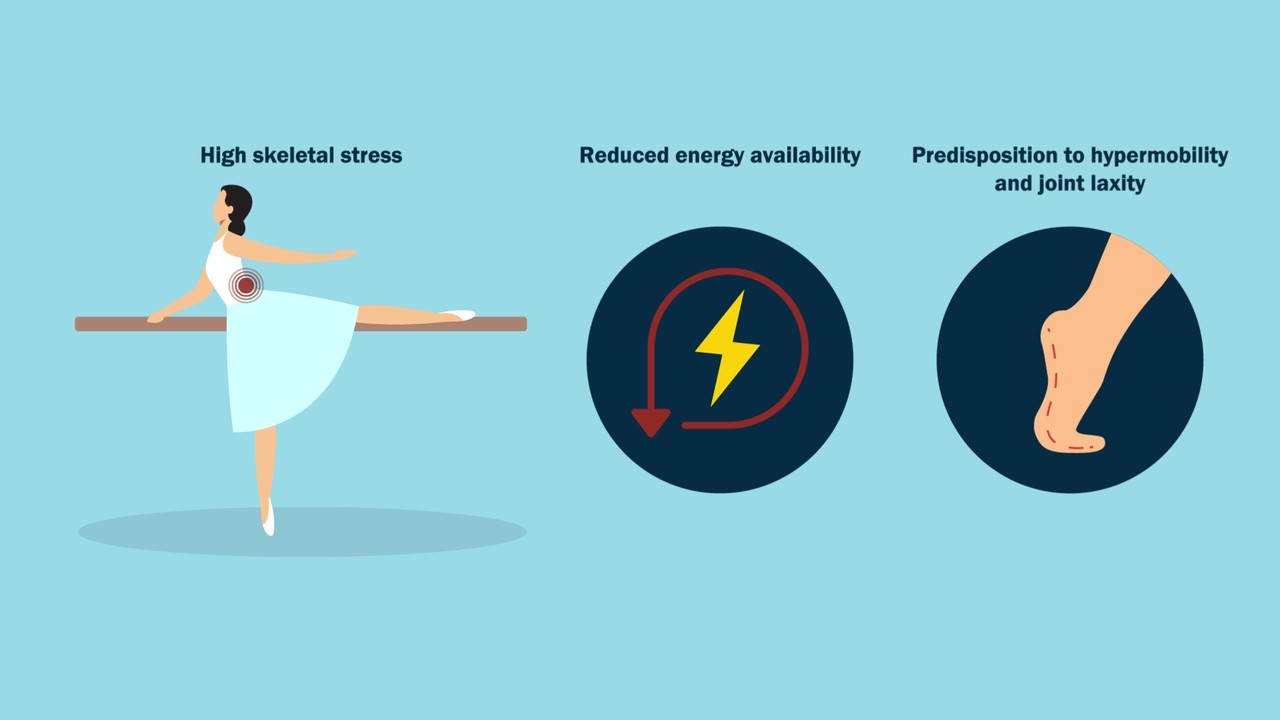Dr. Matt Schmitz, JBJS Deputy Editor for Social Media, offers this post on 2 new studies now available at JBJS.org.
As a pediatric orthopaedic surgeon and adolescent sports specialist, I wanted to highlight a couple of studies in the June 4, 2025 issue of JBJS that caught my eye because of the topics and that may be of interest to OrthoBuzz readers.
The first is a study by Lambert et al. performed at Houston Methodist Hospital in Texas. The researchers investigated the prevalence of idiopathic scoliosis (IS) among professional ballet dancers, emphasizing intrinsic and extrinsic risk factors potentially contributing to this condition.
The authors retrospectively analyzed whole-body radiographs of 98 professional ballet dancers (49 female and 49 male performers). In addition, they used dual x-ray absorptiometry to compare body composition and bone mineral density (BMD) between those with and without IS.
They found that female ballet dancers exhibited a higher prevalence of IS (20.41%) compared with their male counterparts (6.12%) and general population norms. It was also found that, among women, those with IS had a significantly lower body fat percentage and fat mass than those without IS, suggesting a link between reduced energy availability and musculoskeletal health. The study also noted that female dancers with IS had greater upper-extremity length, trunk length, and pelvic width, resulting in a lower leg-to-trunk length ratio. You can find the full study, along with a video abstract summarizing the findings, using the following link:
Increased Prevalence of Scoliosis in Female Professional Ballet Performers
Musculoskeletal injuries are common among elite ballet dancers, with some institutions (including my own) creating dance clinics to help care for these athletes. The findings of this study highlight the need for regular screening of scoliosis in ballet performers, particularly girls, to facilitate early intervention and monitoring. The research underscores the potential influence of both genetic predispositions and training-related factors on the development of IS in this population. Future studies should continue to explore the prevalence of IS and the impact of factors including nutrition and training habits on disease progression in dancers and other young athletes.
Looking at another study, most surgeons who subspecialize in pediatric orthopaedics will, on a consistent basis, care for patients with orthopaedic trauma. In the latest issue of JBJS, Mittal et al. report on the risk of venous thromboembolism (VTE), including deep vein thrombosis (DVT) and pulmonary embolism (PE), in pediatric patients with surgically treated lower-extremity fractures.
The authors utilized the TriNetX Research Network in this retrospective, propensity-matched cohort analysis, which was conducted at Washington University School of Medicine in St. Louis. More than 634,000 patients treated between 2003 and 2023 were divided into 3 cohorts by age: children (<14 years old), adolescents (14 to17 years), and adults (≥18 years).
The researchers found that the overall incidence of VTE was lower in children (0.2%) compared with adolescents (1.0%) and adults (4.1%). Notably, adolescents demonstrated a higher risk of VTE than children across various fracture locations, particularly for pelvic and hip joint fractures (incidence of 2.8% in adolescents and 1.2% in children) and femoral and knee joint fractures (incidence of 2.5% versus 0.5%). The study found that adults had a dramatically higher risk of developing DVT (risk ratio [RR]: 17.0) and PE (RR: 21.8) compared with children. You can find the full study and a downloadable infographic using the following link:
While VTE is rare in the general pediatric population, the study adds to the literature, finding a higher incidence in adolescents compared with children treated surgically for lower-extremity fractures. The findings raise the question of the potential need for prophylactic measures for adolescents undergoing surgical treatment for certain types of fractures, particularly pelvic and femoral fractures. Although database studies can introduce bias based on misclassification, and with other limitations noted by the authors, the study nonetheless spurs ideas for additional focused research related to VTE management protocols for pediatric and adolescent patients.
In a related commentary, R. Dale Blasier, MD, FRCS(C), MBA poses 3 questions for further consideration on the topic: The Risk of Venous Thromboembolism in Children After Trauma Is Greater Than We Think
Both of the above studies demonstrate some excellent work being done by scientists in orthopaedics with the potential to impact our young patients.
JBJS Deputy Editor for Social Media
Additional Pediatric Studies in the Current Issue of JBJS:
The Factors That Affect Operating Room Start Time for Pediatric Femoral Shaft Fractures
Monitoring Sleep-Breathing Disorders in Patients with Idiopathic Scoliosis




